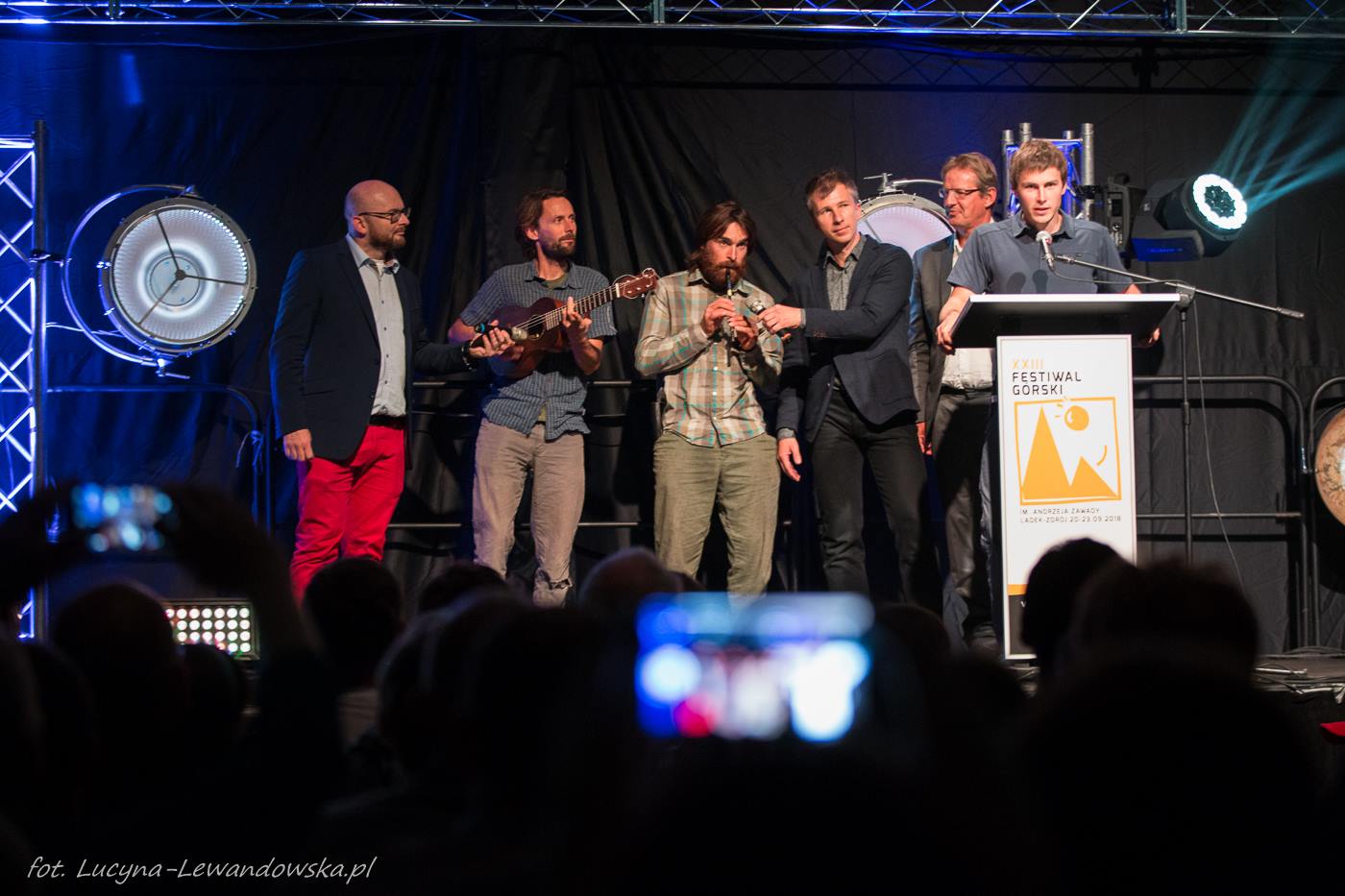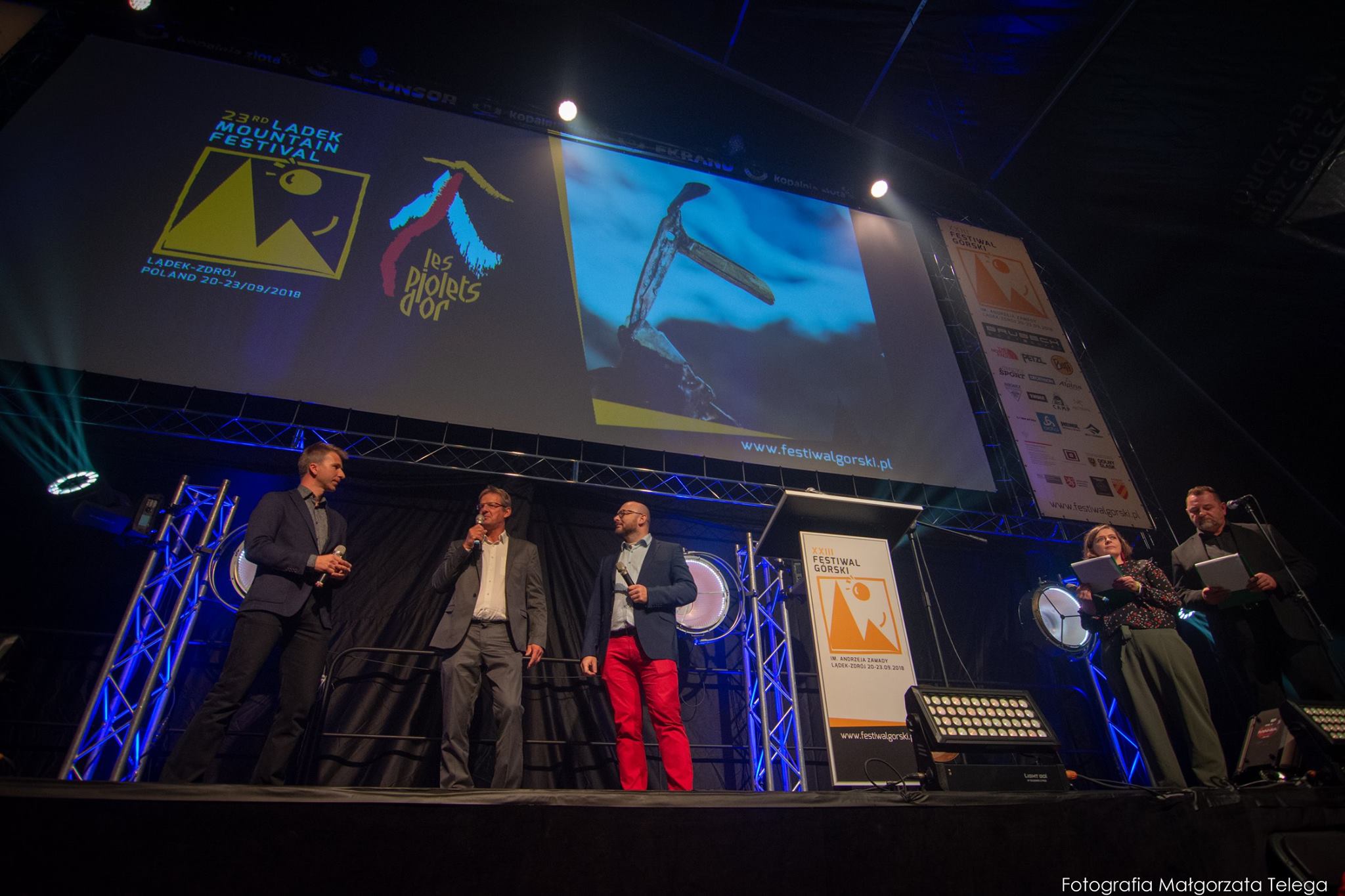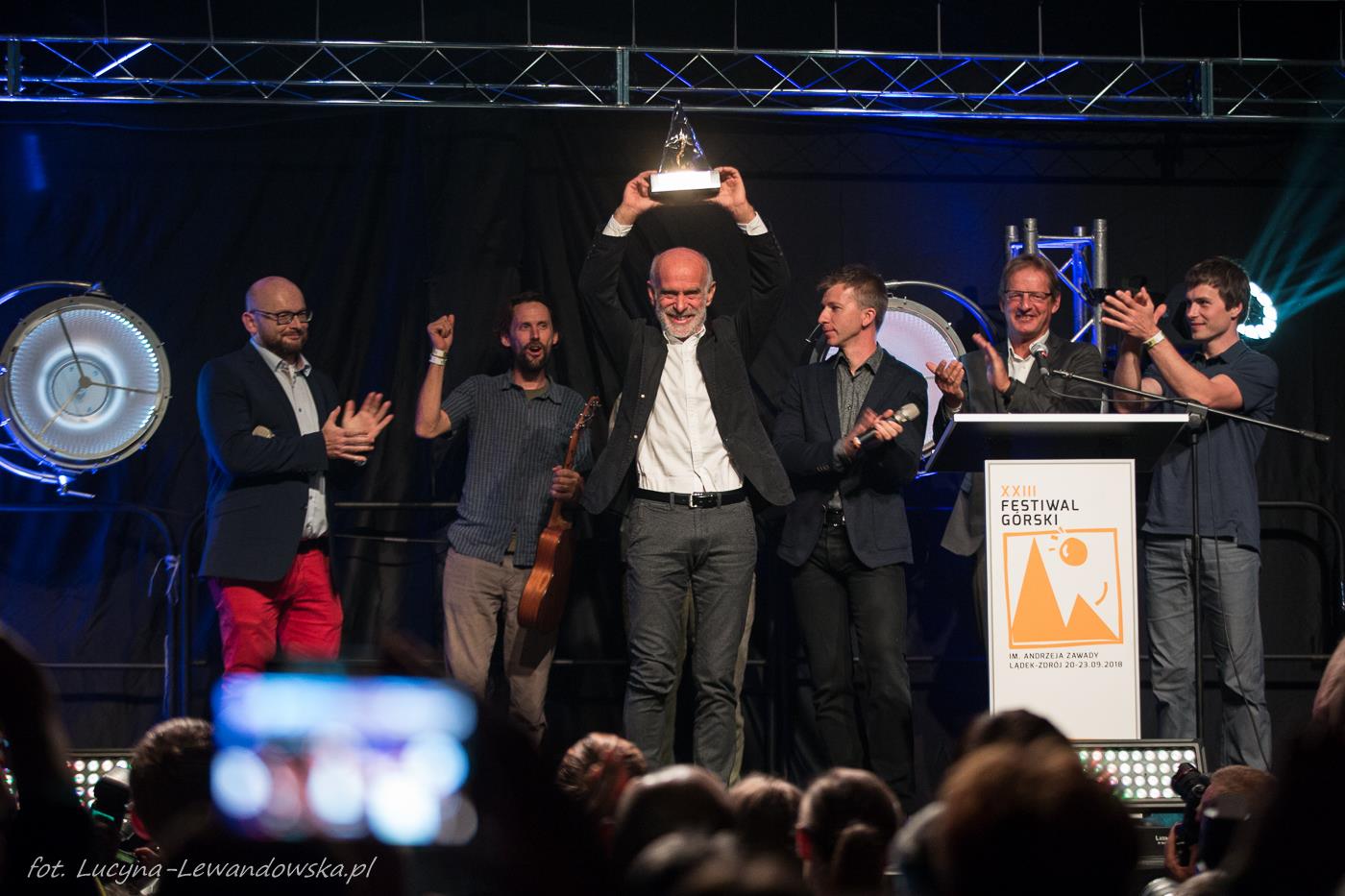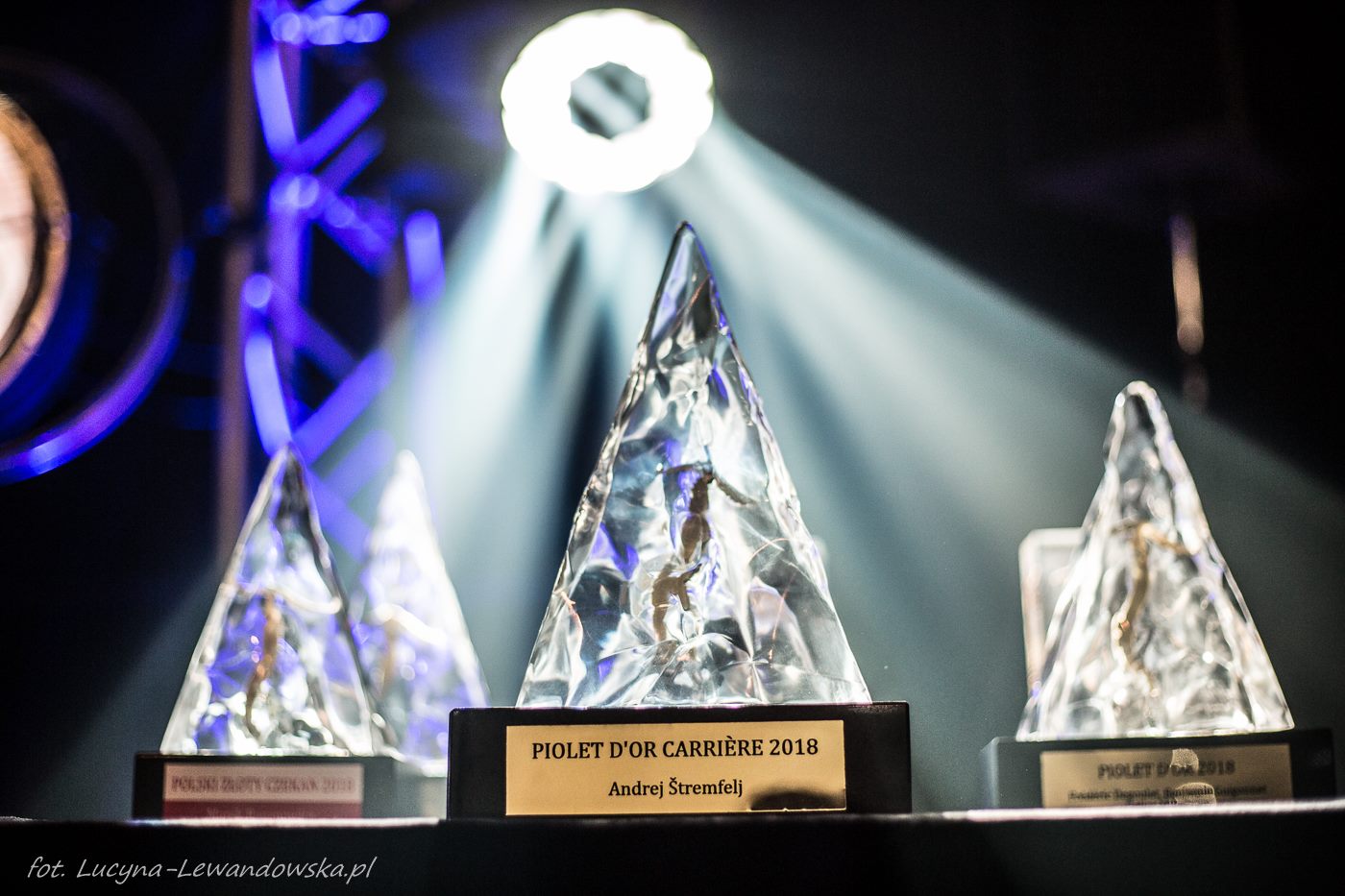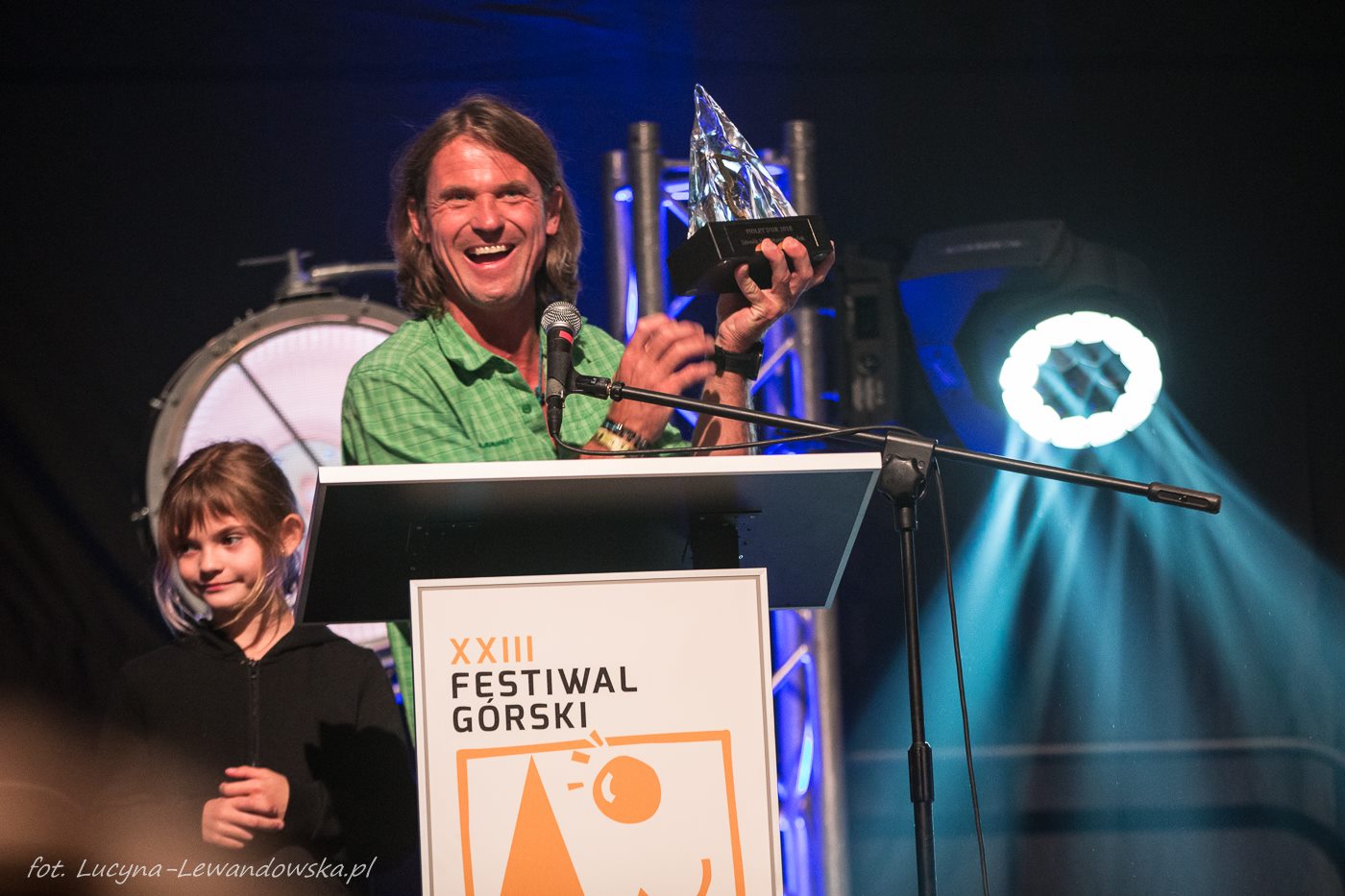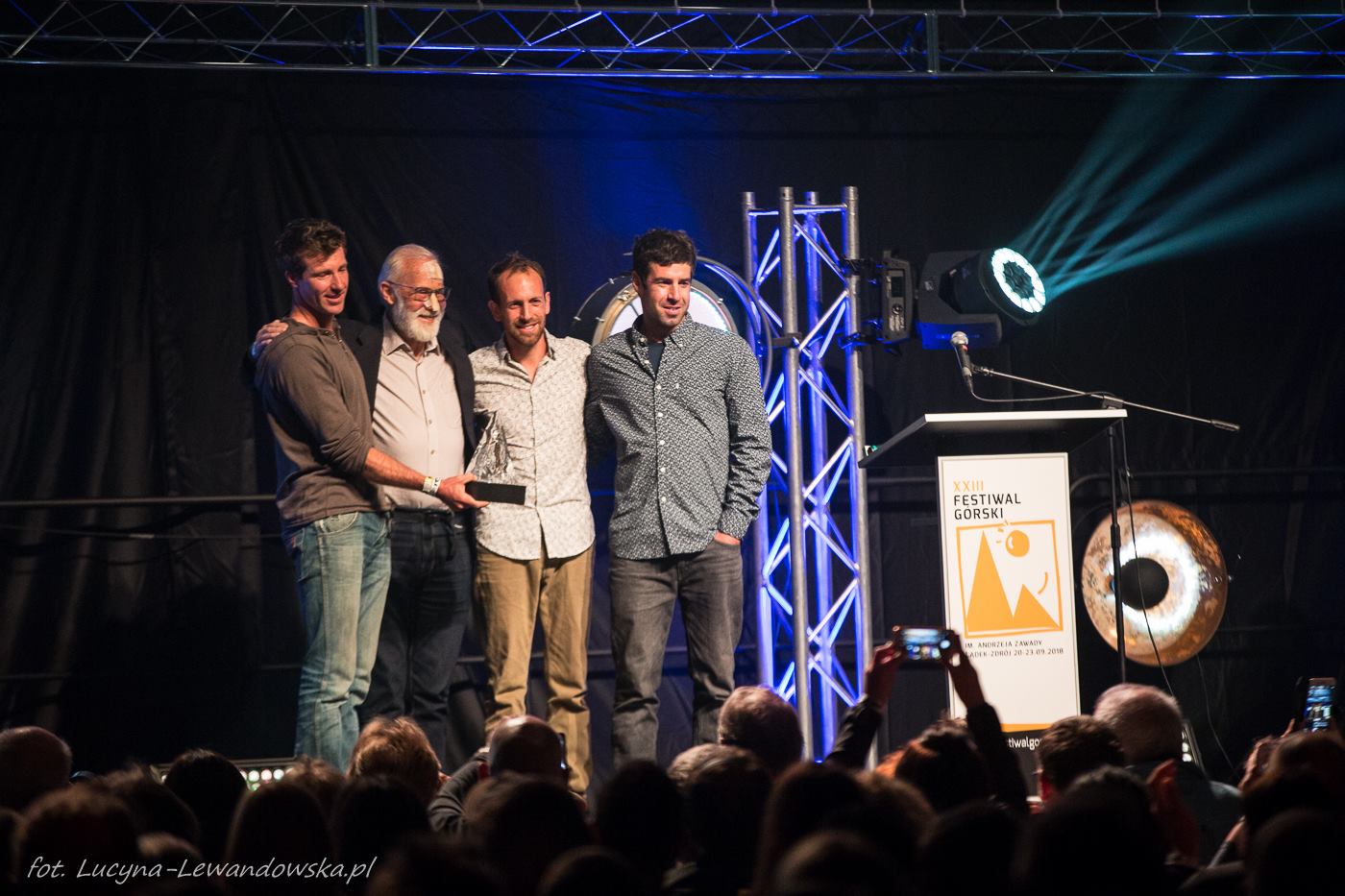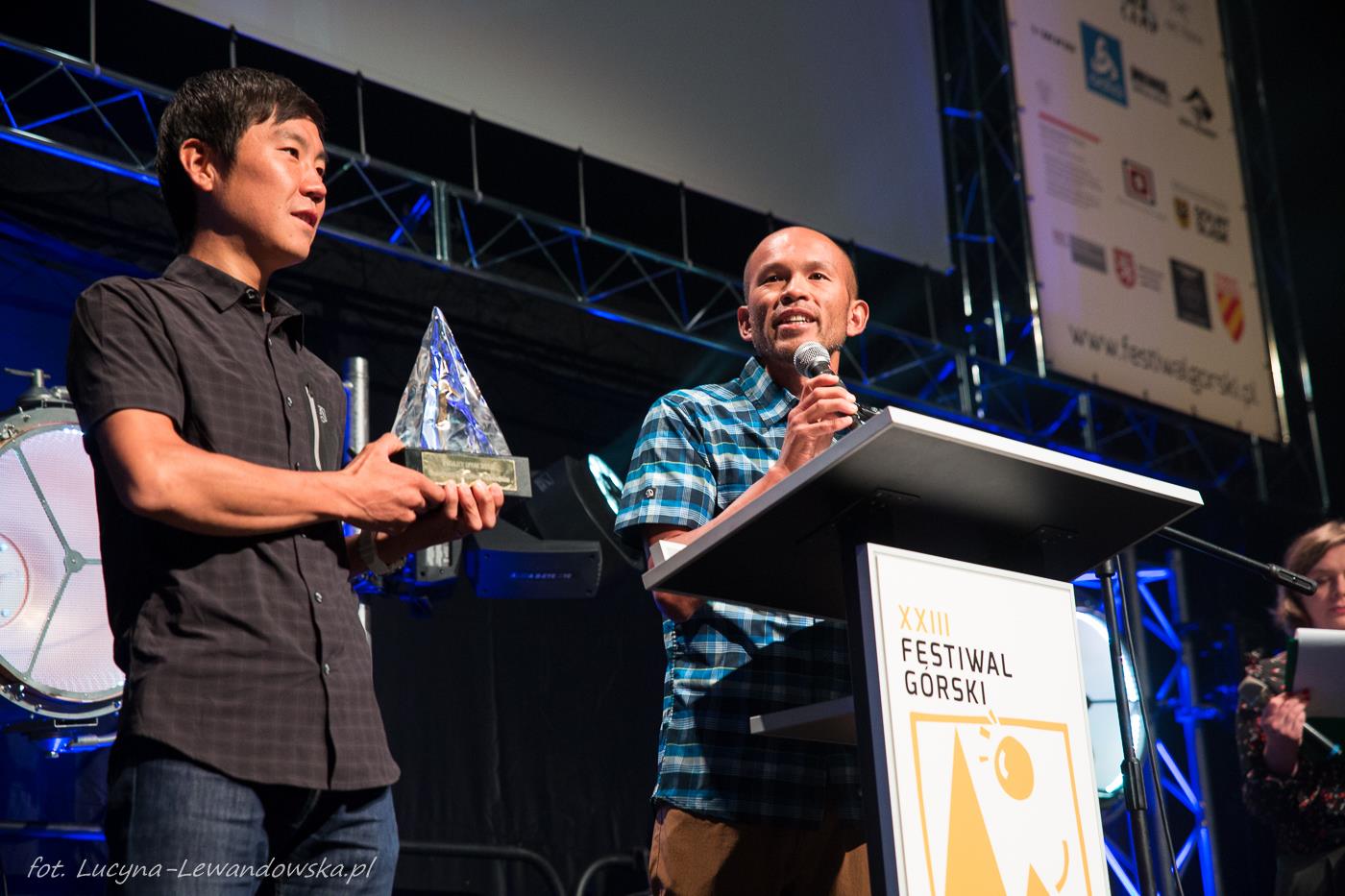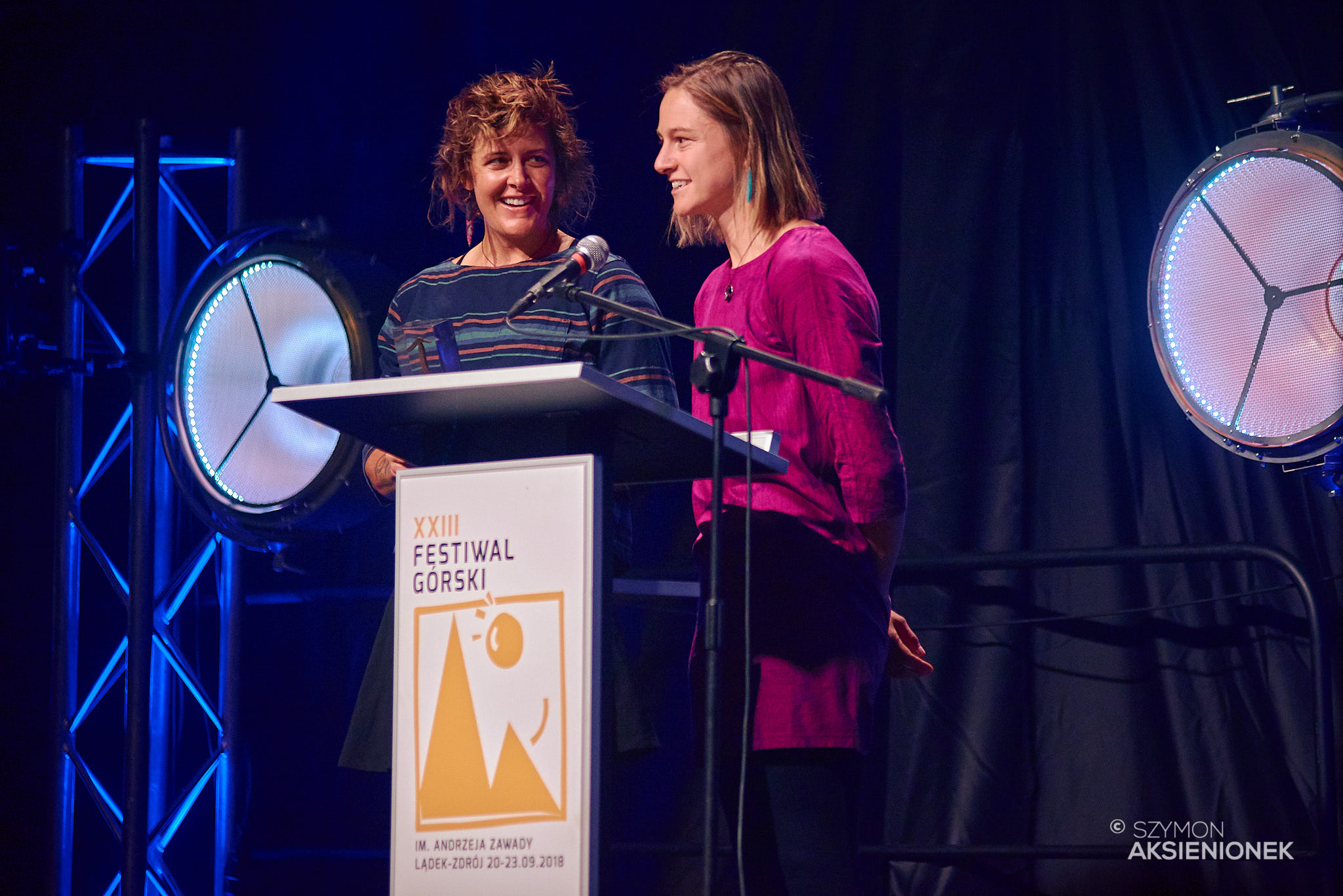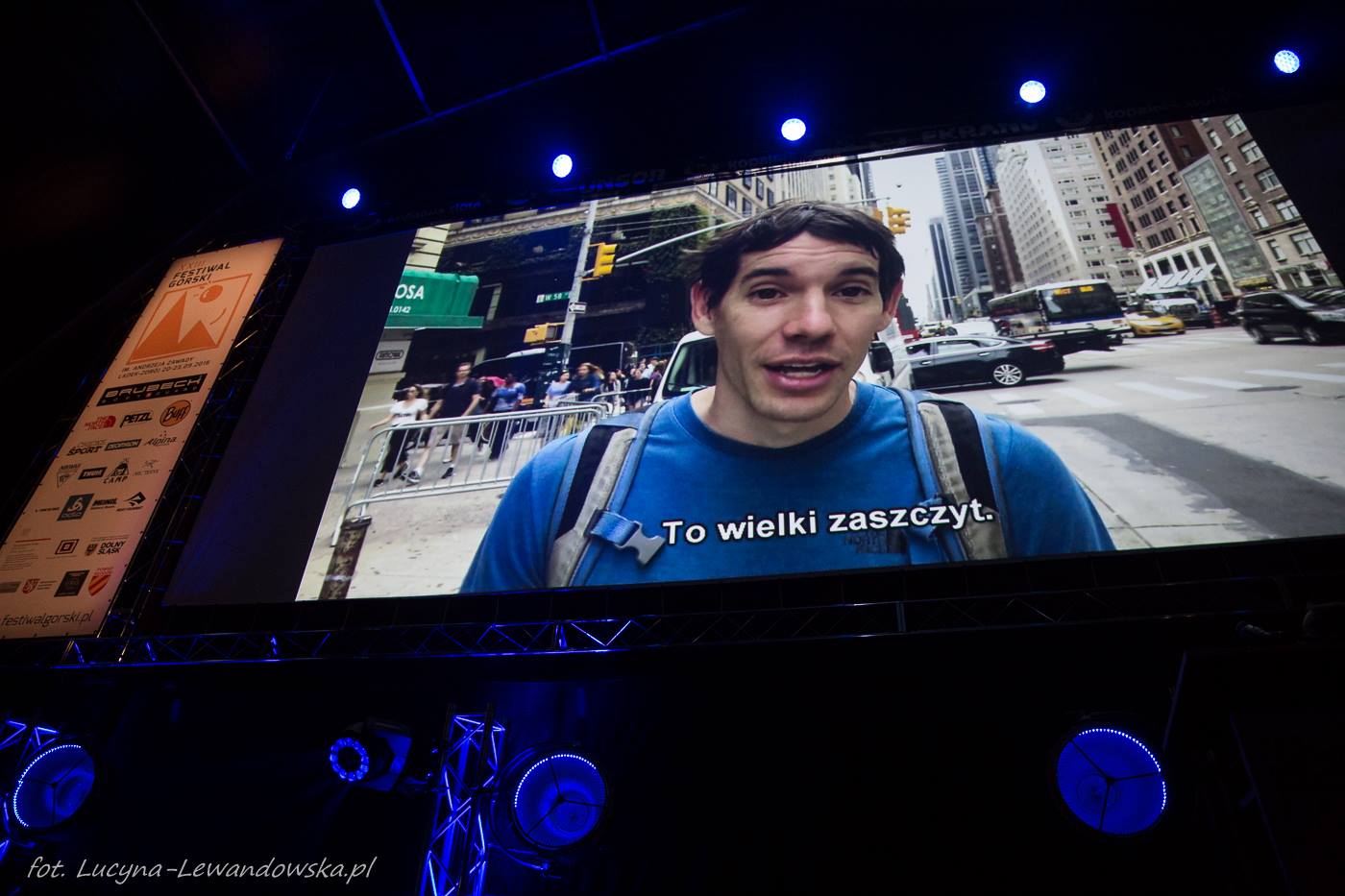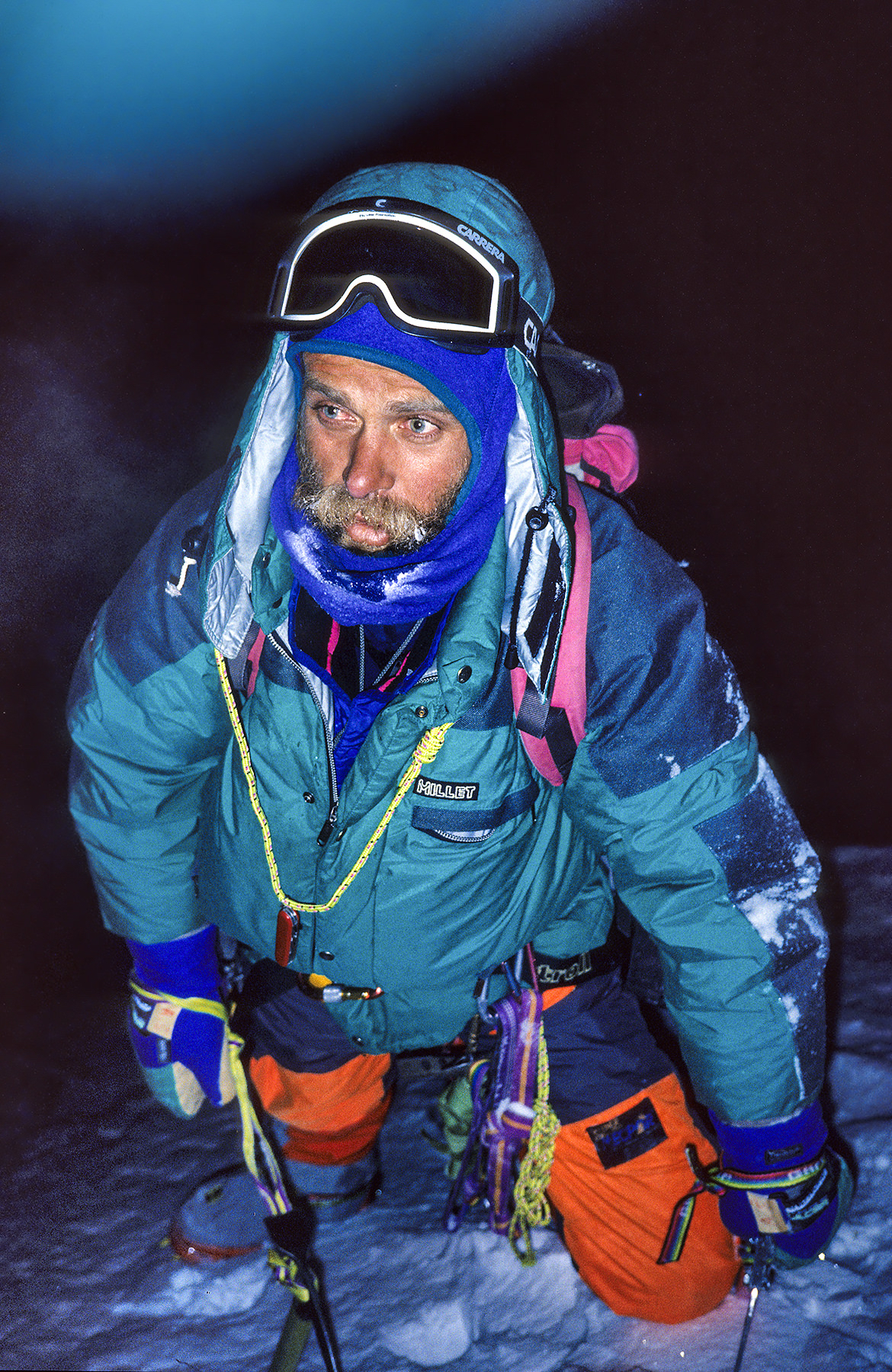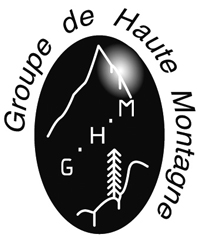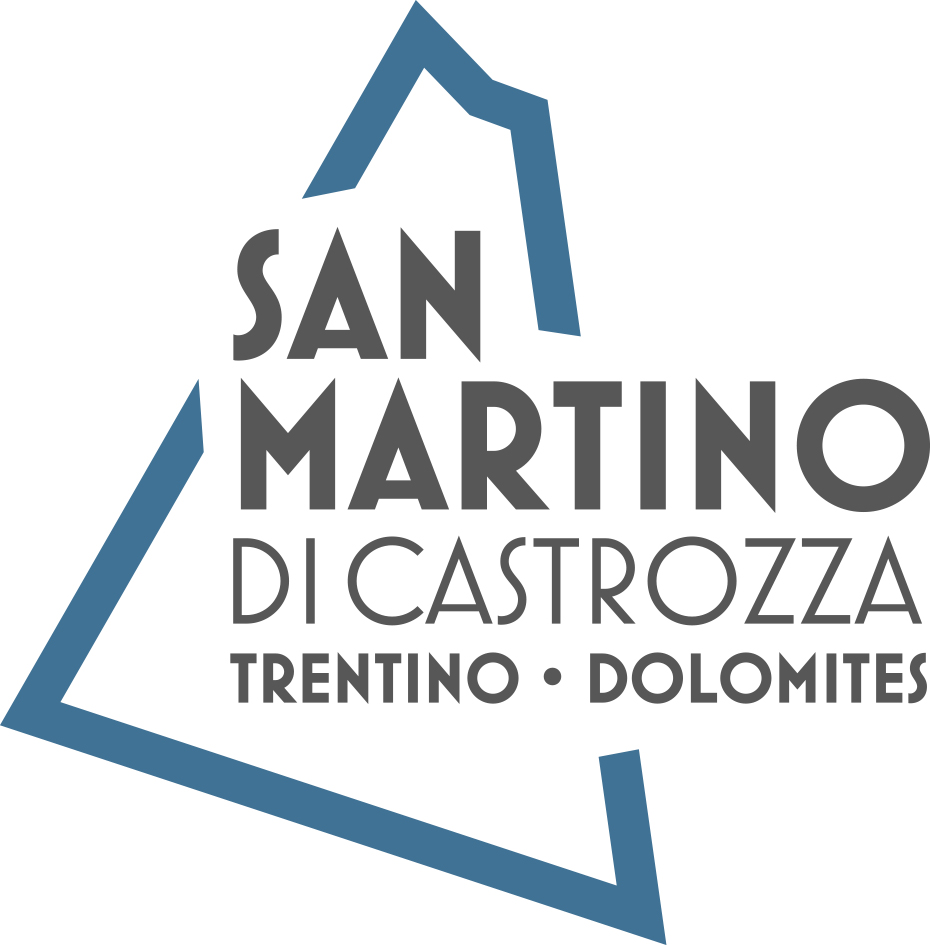The MASTER.
His name is Andrej.
Andrej Štremfelj.
Only special people can successfully maintain a genuine enthusiasm for life into their later years. In this regard, Andrej Štremfelj may be unique. His attitude to alpinism, including life, preserves both a freshness and maturity.
People might say he was born under a lucky star, but it’s glaringly obvious that he has put considerable effort into making the most of what he’s been given. In spite of huge social changes in recent years, the values he transmits to our whimsical tribe have not changed. His role as a pedagogue completely fits his character.
Andrej conveys his experiences and views primarily by direct example, although he will sometimes produce writing that displays an appropriate emphasis and compassion. He is still able to connect playfulness and responsibility, one of the essential "tricks" that has ensured he has reached a mature age both satisfied and happy, as an alpinist and as a man.
It was just the two of us on Menlungtse, sharing our values, spontaneity, light-heartedness, playfulness, and the belief that there was nothing we couldn't climb together. We quickly replaced the last cocky notion with humility, and were rewarded with a deeply meaningful climb to the summit. It gave profound views, especially within ourselves. By the standards of romantic alpinism, we had an experience that is only possible when you are truly in tune with each other.
While clearing our base camp, we managed to turn a couple of tiny branches into a fire large enough to burn some of our flammable garbage. When we were nearly finished, an experimental dwarf inside me decided to have a little fun and put an empty gas canister onto the smouldering remains. We stood next to the dying embers and happily watched as the can began its metamorphosis. Suddenly, the swollen can made a hissing sound, took off, and flew a couple hundred meters along a perfect parabolic trajectory. We looked at each other with smiling eyes and immediately began rebuilding the fireplace, looking for another gas canister to repeat the experiment. I soon found one that still had some gas, and carefully placed it onto our hot launch site. We knew that as the canister was not completely empty, the results might be a bit more intense. With this in mind we ducked behind the tent and watched the can on the smouldering pile with roguish interest. We waited impatiently: it seemed as though nothing was going to happen. However, all of a sudden there was a sharp bang. Immediately, everything (including ourselves) was under a tsunami of embers and hot sand. A small crater was all that was left of our improvised launch site, and the tent, along with everything in it, was full of little holes. With our curiosity satisfied, we both laughed uncontrollably at our mischievousness.
Although our curiosity is still as insatiable as ever, it’s been a while since we last did anything similar together. However, whenever we meet, the occasion is always full of childish joy.
In 1977, the year Andrej made his Himalayan debut, a Slovenian writer named Polonca Kovač wrote a children’s book, the title of which, loosely translated, is “There can never be too many Andrejs” (at that time Andrej was a popular name amongst newborns). With our Andrej in mind, I can only agree. Alpinism will never get bored of Andrejs such as Andrej Štremfelj.
How did Andrej Štremfelj manage to balance all the things in life that were important to him, yet still arrive at this point in time - a time where our tribe of alpinists is thanking him for his outstanding contribution to the development of our art - as a contented man? He is probably the only person who'd know the complex answer to this question, so let’s take a brief look at the things he likes to point out when talking about himself.
He was born on December 17, 1956, in Kranj, where he still lives with his wife Marija. They have three children: Katarina, Anže, and Neža. He finished high school in Kranj and later, in 1983, graduated from the University College of Sports. He works at the Škofja Loka School Centre as a sports teacher.
He is without a doubt the dominant figure of Slovenian Himalayan alpinism.
While still in primary school he began visiting the mountains with his brother Marko, then started climbing in 1972 on joining the Kranj Alpine Club.
He deliberately abstained from collecting eight-thousanders, preferring to pave the way for alpine-style climbing in the Greater Ranges. Before turning 21, he had already reached the top of Gasherbrum I with Nejc Zaplotnik, who transmited his alpine philosophy to Andrej.
His second Himalayan experience came two years later: Everest West Ridge Direct - the greatest achievement in Yugoslavian alpinism. He again summited with Nejc Zaplotnik. In those days the end still justified the means (to the top at all costs) but the West Ridge Direct has maintained its status as an extremely difficult route, even today when we know that the style of the ascent matters much more than reaching the summit. After Everest he climbed six more summits higher than 8,000m: Broad Peak, Gasherbrum II, Xixabangma, Kangchenjunga South, Cho Oyu, and Dhaulagiri. He climbed two of them by new routes and three in pure alpine style. Twice he stood atop the highest mountain on Earth: eleven years after his ascent with Nejc he climbed it again with his wife Marija.
But Andrej would pursue alpine-style climbing, cementing its status as the only acceptable approach, even on mountains that had previously been in the domain of siege-style expeditions employing oxygen bottles and fixed ropes.
His first major alpine-style climb was a new route on the southwest face of Xixabangma (Shisha Pangma) in 1989 with Pavle Kozjek. Then six months after his second ascent of Everest came the achievement that Andrej considers his greatest: Kangchenjunga South by a new route in alpine-style. For this climb Andrej and I received the first ever Piolet d’Or. Andrej later accepted responsible posts at this peculiar event, first as a jury member, then as president of the jury.
During his long career, Andrej took part in more than 20 expeditions to the Himalaya and three to the Karakoram, and he was often the leader. He was the first to stand atop the seven-thousanders Nyanang Ri, Menlungtse, and Janak Chuli (all via new routes climbed alpine-style), and he opened a new route on Gyachung Kang, officially the World’s tallest seven-thousander.
He’s climbed in Patagonia (new route on the North Tower of the Torres del Paine), Pamir (Bezzubkin Pillar on Pik Communism); Sierra Nevada (The Nose on El Capitan), Caucasus (Elbrus), and Scotland. He’s been to the top of the highest summits of North and South America (Denali and Aconcagua), and he openly admits that he still wants to climb Antarctica’s highest peak.
He’s also been active on the organizational and administration side of alpinism: he was the president of the Kranj Alpine Club and various commissions of the Alpine Association of Slovenia.
In 1982 he became a certified mountain guide and he’s worked as an instructor for the Slovenian Mountain Guides Association for nearly two decades. He was twice an instructor at the school for mountain guides in Manang (Nepal), and was also head of this school for one season.
I often recall many of our adventures together, though which ones depend on the situation that triggers the memories. Besides his playfulness, the thing that usually resurfaces is Andrej’s devotion to moving through the mountains.
On the third day of our climb on Kangchenjunga, on a glacial plateau high above 7,000m, Andrej taught me a lesson that had an irreversible effect on my sub consciousness.
“Hear and forget
See and remember
Do and understand”
The wind was so strong that we couldn't continue up the sharp ridge ahead, as planned. We climbed down to a plateau, from where we could have easily escaped to the Normal Route. There, other members of our expedition were fixing ropes and setting up high camps, but they were so far distant (and quite possibly unable to come to our assistance) that we felt physically alone on the mountain. Escape was a compelling option, and at first seemed the only reasonable and safe thing to do.
The pressure to make a decision had a physiological effect on me, a 25 years-young man. I got out of the wind and into a nearby crevasse, where I answered the call of nature. Relieved of the pressure in my bowels, I climbed back out, looking forward to making a decision with Andrej about how to continue. However, I was filled with dread as I saw that he was already climbing, even though the route we had observed beforehand didn’t look promising. I felt betrayed. Andrej had made the decision by himself, even though it concerned us both. In addition, the distance between us had grown considerably and we were on a glacial plateau with many hidden crevasses. I charged up behind him, full of anger and resentment, planning how I would “confront” him upon our reunion. I was climbing as fast as I could, but the thin air prevented me from catching him. When Andrej finally slackened his pace, the distance between us began to shrink. I got close enough for him to be able to hear me, but then had to stop and take a few deep breaths. Andrej immediately smiled at me and said, "You’re doing great. Do you want to take the lead?” In an instant, all my resentment disappeared.
Andrej’s relationship management skills are that good!. His non-confrontational manners are his trademark. People sometimes resent his mellow, laid-back responses, but Andrej doesn’t dwell on such trifles; any disputes are short-lived whenever he’s around.
Along with the praise of the pampered public, which rushes to decorate him with glorious garlands, he’s also been shaped by the experiences the general public is quick to label unsuccessful, carelessly using the summit as the most convenient criterion of success and/or failure.
Such were Lhotse South Face, Annapurna South Face, Lhotse Shar, K2, Dhaulagiri East Face, and Api where we miraculously survived a serac fall.
Andrej would probably agree that he’s had his fair share of luck. He survived an accident in the French Alps, where things could have easily turned out very differently. Andrej’s devotion to the mountains was tested to the limit when Barbara, his climbing partner, fell on the north face of Šite, and when Nejc died on the lower slopes of Manaslu.
Nowadays, most of his climbing takes place in the Alps and various sport-climbing crags all over Europe. It’s incredibly rare for people his age to be as active in the climbing world.
On more than one occasion, I’ve had the privilege of being in the company of established legends of alpinism from all over the world. Although it’s usual for people from other countries to have trouble pronouncing Andrej’s surname, I sensed from their talk that every single one held him in great respect and admiration
He’s now at an age when all generations genuinely hold him in high regard. Recognition is self-evident. But since this recognition is, in a way, a reflection of the state of our tribe, it offers a chance to look at the image in the mirror, an image that might offer some insight into what the future could hold. We can indeed never have too many of our Andrejs.
For Andrej’s contribution to Slovenian and global alpinism, we express our sincere gratitude and respect. He’d probably be more moved by all this if it came at a later time, when he'll be sitting in front of his house, old and tired, gazing across to the mountains thick with memories. But the thought that Andrej’s restless spirit won’t allow such idleness is enough to know that the tribal tribute has come at exactly the right moment. It won’t slow him down the tiniest bit and, hopefully, some of the younger generation will find healthy inspiration from his lifestyle. At a time when pretence and being a fake are becoming the socially accepted norm, Andrej is the exact opposite of such practice, and could be the tinder that sparks the imagination of youngsters who crave for recognition and approval.
Everyone tries to live their lives as they see fit. Perhaps only Andrej knows how he juggled all the decisions that brought him to the point at which he is today. It is my quiet, compassionate wish that he'll one day write a book on some of his experiences. All I can do at this point is to end with humility and gratitude: Andrej's opus (both in alpinism and in life) is one of a kind. Because envy might be the sincerest form of admiration, I can say he’s possibly the only person I am slightly envious of from time to time. He has stayed true to himself throughout the years.
Andrej.
The one and only.
The Master.
If we follow our common values long enough, perhaps we’ll meet our own “Andrej” somewhere along the road...
So, good luck to Andrej and all the future “Andrejs”, as many as there may be.
Marko Prezelj
Translated by Gorazd Pipenbaher
CLIMBING CAREER
After graduating from Ljubljana University, Andrej Stremfelj went on to teach physical education at Skofja Loka School Centre. He became a mountain guide in 1982 and a fully qualified IFMGA guide in 1997. Although he climbed new routes in his home mountains, arguably Andrej's most significant achievements there took place in 1989, when he made first and second winter ascents of three steep and difficult routes on the north face of Mangart [at around 2,680m the third highest peak in Slovenia], and in summer 2002, when he celebrated 30 years as an alpinist by climbing, within the space of 40 days, 30 different routes on 27 different peaks throughout Slovenia. The most notable of these was Zajeda on Široka Peč in the Julian Alps. However, it was the creation of bold, technically difficult routes in the Greater Ranges, particularly at the highest altitudes, where he really made his mark.
By 1977 his reputation as an alpinist ensured he was chosen to join Janusz Loncar's Yugoslav expedition to attempt the fourth ascent of Gasherbrum I (8,068m) via a new route, the southwest ridge. In poor weather and climbing alpine style above 7,200m, Andrej and another Slovenian icon from the era, Nejc Zaplotnik, completed the first ascent of the ridge in difficult conditions. In 1979 he upped the game, making the first ascent of the West Ridge Direct on Everest (8,848m; he would return to Everest in 1990, making an ascent of the Normal Route with his wife Marija, the first married couple to stand together on the summit). In 1983 he made an unusual alpine style ascent of the Bezzubkin Pillar on Pik Communism (7,495m), in 1985 a new line on the east face of Dhaulagiri - though his party was unable to summit after reaching the east ridge at 7,500m), and in 1986 a 32-hour round trip ascent of Gasherbrum II (8,035m) from base camp. In 1989 he climbed a new route in alpine style up the central pillar of the southwest face of Xixabangma (8,027m). Two years later, in 1991, came perhaps his masterpiece, a bold alpine style ascent of the south ridge of Kangchenjunga to the south summit (8,476m), an climb awarded the first ever Piolet d'Or. In 1999 he made the first ascent of the north face of rarely climbed Gyachung Kang (7,952m). Inevitably, climbing at high altitudes isn't always successful. An attempt to make an alpine style ascent of the British Route on the south face of Annapurna was thwarted low down by dangerous conditions. However, there were two notable "failures". In 1981 he reached 8,250m on the unclimbed south face of Lhotse (8,516m), and in 1988, in an attempt to make its second ascent, reached 8,100m on the south-southwest pillar - the Magic Line - of K2 (8,611m).
At slightly lower altitudes Andrej made first ascents of a number of Himalayan peaks such as Nyanang Ri (7,071m, 1989), Boktah (6,114m, in 1991), Palung Ri (7,012m, in 1995), Siguang Ri Shar (6,998m, and a new route on 7,309m Siguang Ri, both in 1999), Lashar I (6,842m in 2005), and more significantly the two highly-coveted summits of Menlungtse (7,181m, via the east face in 1992), and Janak (7,041m, via the southwest pillar in 2006). Outside Asia he travelled to Patagonia in 1996 to put up Born under a Wandering Star on the east face of the North Tower of Paine.
Always willing to share his enthusiasm, Andrej has continued climb at a high level for a remarkably long period - more than 45 years. This was recognized in 2017 when the Alpine Association of Slovenia presented him with the fourth Lifetime Achievement Award in the field of alpinism.
Lindsay Griffin
